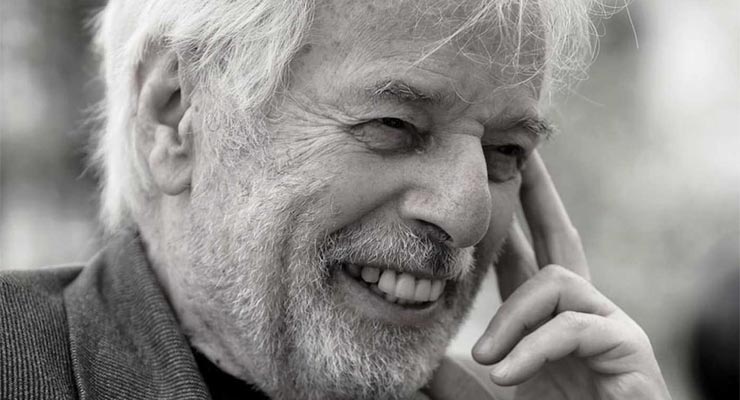
Alejandro Jodorowsky’s psychomagic method of shamanic psychotherapy, an incredible tool for overcoming life blocks by “magic” ritual
Psychomagic is the name of a new school of shamanic psychotherapy developed by the legendary Chilean filmmaker Alejandro Jodorowsky. Jodorowsky is the director of the films El Topo, The Holy Mountain, Santa Sangre and many others—hallucinatory, kaleidoscopic pieces that don’t as much entertain the viewer as initiate them into the world of the unconscious and of the heights of human spiritual aspiration.
Inner Traditions recently sent me Jodorowsky’s Manual of Psychomagic, and my buddy Jeff Newelt (aka JahFurry) sent me Jodorowsky’s autobiography The Dance of Reality, two of Jodorowksy’s many recent books detailing the psychomagic method he has developed for treating his therapeutic patients. While psychotherapy is concerned with bringing the contents of the unconscious into the consciousness by talking and working through issues, Jodorowsky’s psychomagic has patients ritually enact their unconscious desires in order to free themselves from the blockages in their lives.
RELATED: A Beginner’s Guide to Alejandro Jodorowsky, the Magus of Cinema
In developing the method, Jodorowksy drew upon the tradition and language of European grimoire magick and South American faith healing, understanding that the techniques of “magic” are really ways of speaking directly to, and unlocking, the vast contents and power of the unconscious mind and “reprogramming” it to heal the individual.
What is Psychomagic?
From Manual of Psychomagic, a veritable modern grimoire in which Jodorowksy explains his method:
Psychomagic proposes that we act, not just talk. The consultant, following a path contrary to that of psychotherapy, instead of teaching the unconscious to speak a rational language, learns the language of the unconscious, which is composed not only of words but also actions, images, sounds, smells, tastes, or tactile sensations. The unconscious is capable of accepting symbolic or metaphoric fulfillment: a photograph of someone who can represent the actual person or a part can represent the whole (such as witches casting a spell with hairs of their potential victim). The unconscious projects, from memory, the person onto another being or object. The creators of psychodrama realized that someone who agrees to play the role of a relative can provoke deep reactions from a consultant, as if the relative were standing there in person.
RELATED: Here’s 8 Celebrities Who Practice Chaos Magick
Punching a cushion produces relief from anger toward an abuser. But to achieve good results, the person who punches the cushion must, in a way, free herself from any morality imposed by the family, society, and culture. If the consultant does this, she can, without far of punishment, accept her (always amoral) inner urges. For example, if someone wants to eliminate his little sister, because she attracts the mother’s attention, and pins a photograph of the little one onto a melon and busts the fruit apart with a hammer, his unconscious assumes the crime is done. This way, the consultant feels liberated.
How Jodo Developed Psychomagic
Jodo’s autobiography, Dance of Reality (I haven’t seen the movie), is one of the most inspiring and wise life stories I’ve read, starting with his boyhood in Chile, his struggles with his domineering and abusive father, his education in poetry and theater, and his decision to let go of the “Jodorowsky” he had been born as, shed his identity and move to Europe to begin anew as a self-created individual, dropping his old limitations and taking the perilous shaman’s leap into the unknown.
RELATED: Here’s 4 Classic Reality Hacks From Robert Anton Wilson
He also describes his meetings with potent 70s gurus like Oscar Ichazo, the Gurdjieffian founder of the Arica School (who may have also been one of the primary inspirations for Carlos Castaneda’s fictional Don Juan), who shows Jodorowsky how to “strip off” his human shell and become a fully realized being. He also chronicles his journeys throughout the world meeting shamans, magicians and faith healers, and developing psychomagic by observing and learning from them. Finally, he discusses his clinical practice and many, many case studies of using psychomagic methods to help his patients overcome blocks and childhood traumas.
Manual of Psychomagic takes it further, giving the reader an entire manual of psychomagic “spells” to use in their own lives to heal or overcome nearly any issue, and describes the method of developing new psychomagic rituals if needed. (The performance artist Marina Abramovic describes it on the back as “a cookbook of very useful recipes that can help us to understand our life and the universe we live in.”)
How to Get Started
Both Manual of Psychomagic and Dance of Reality are highly recommended—I’ve barely begun to dig into the material in the Manual, but I feel it could be a crucial book in helping the broader culture to understand exactly what magic is and why it still matters to so-called “rational” people… who still have very irrational neuroses, that sometimes can be cured only in irrational ways. And Dance of Reality is one of those rare books that makes you realize how far you have to go as a human being, in a delightful way.
Below, check out a full interview with Jodorowksy about the psychomagic method (it has English subtitles).
Check out our free guide to chaos magick here. Start learning magick and occultism at Magick.Me, our online school for chaos magick. Start learning magick and occultism at Magick.Me, our online school for chaos magick. Start learning magick and occultism at Magick.Me, our online school for chaos magick.
Leave a Reply